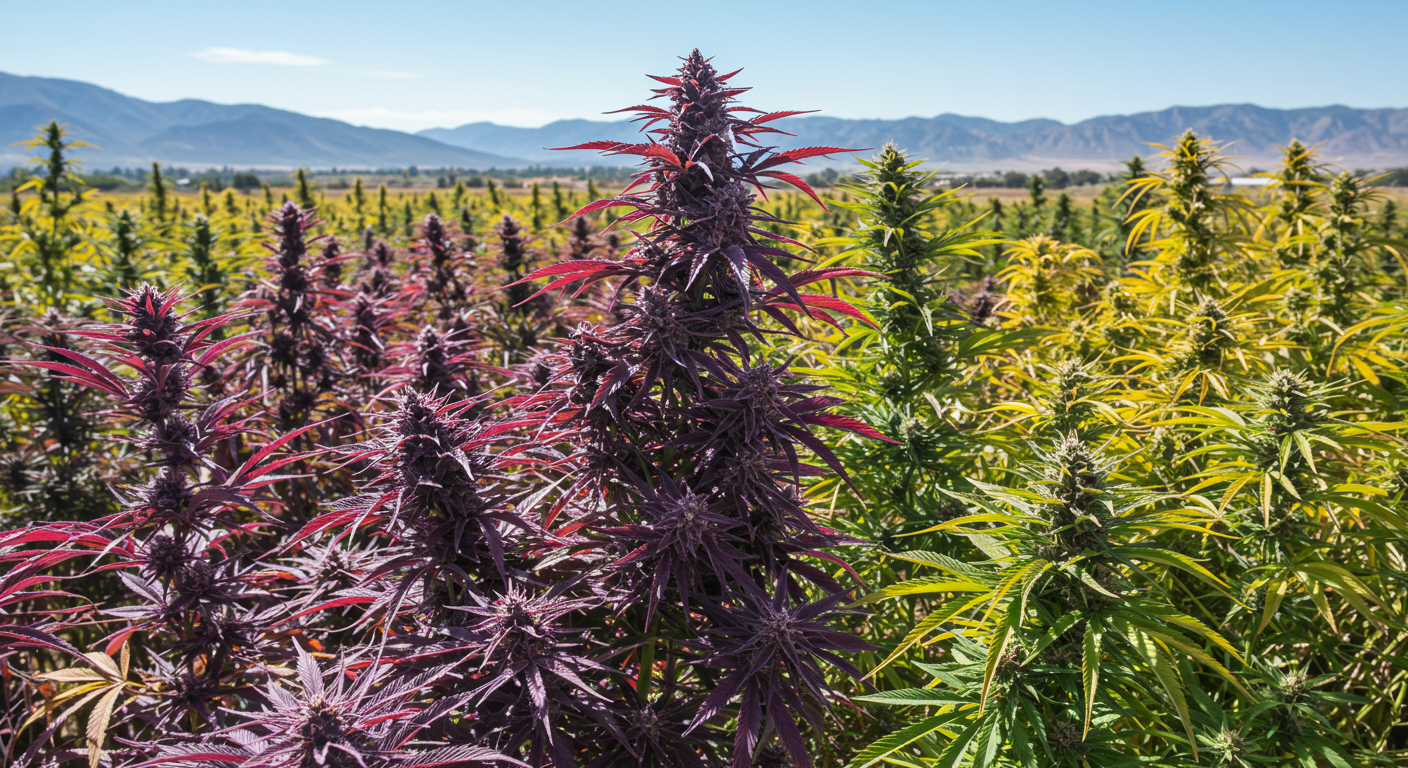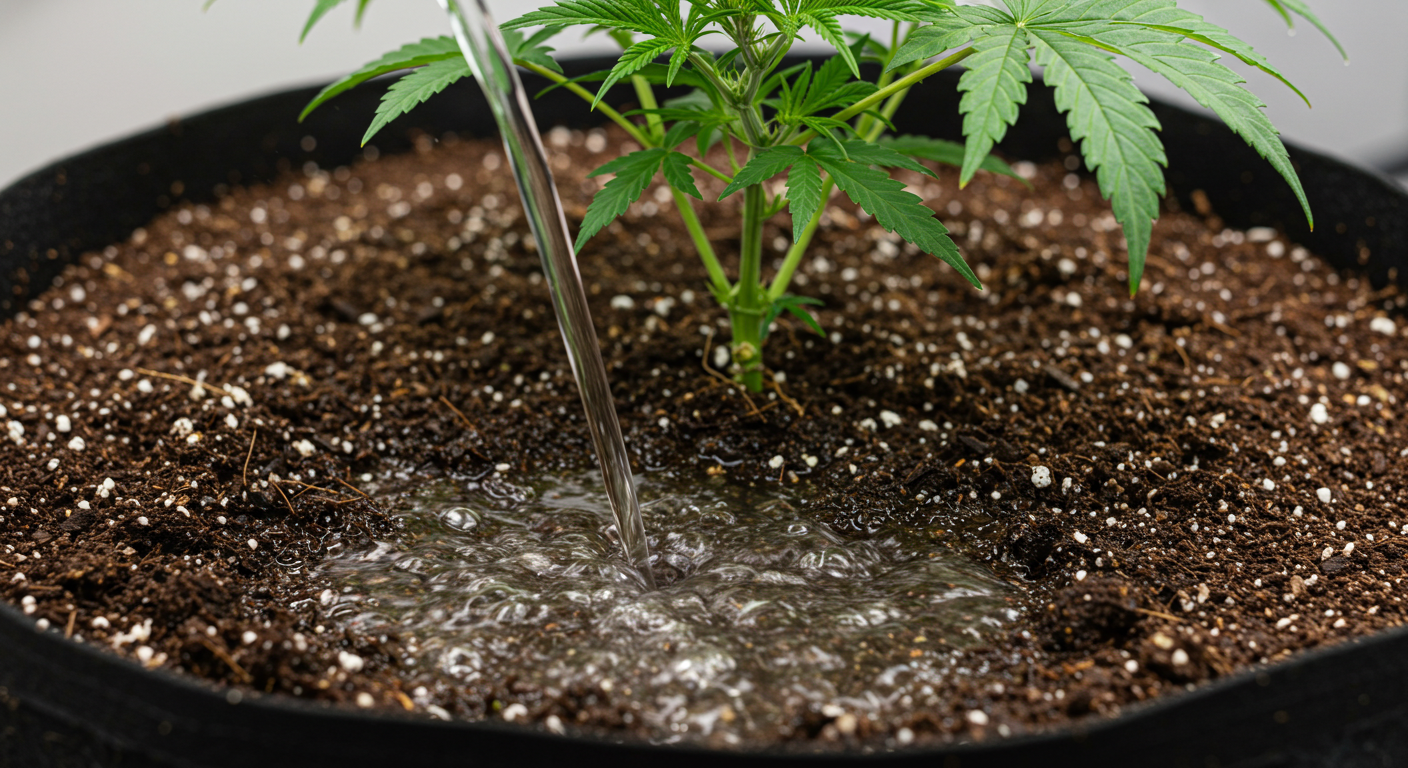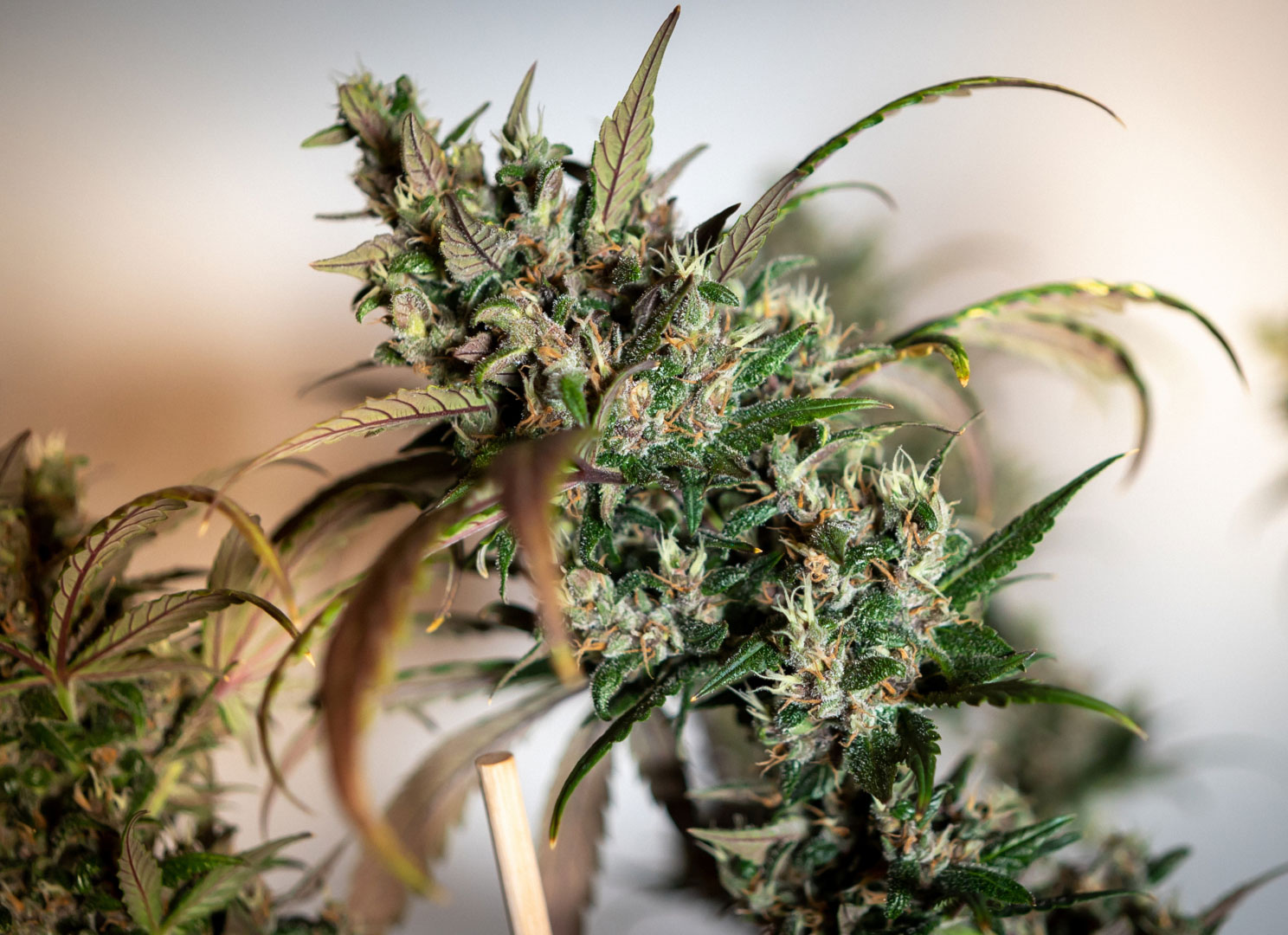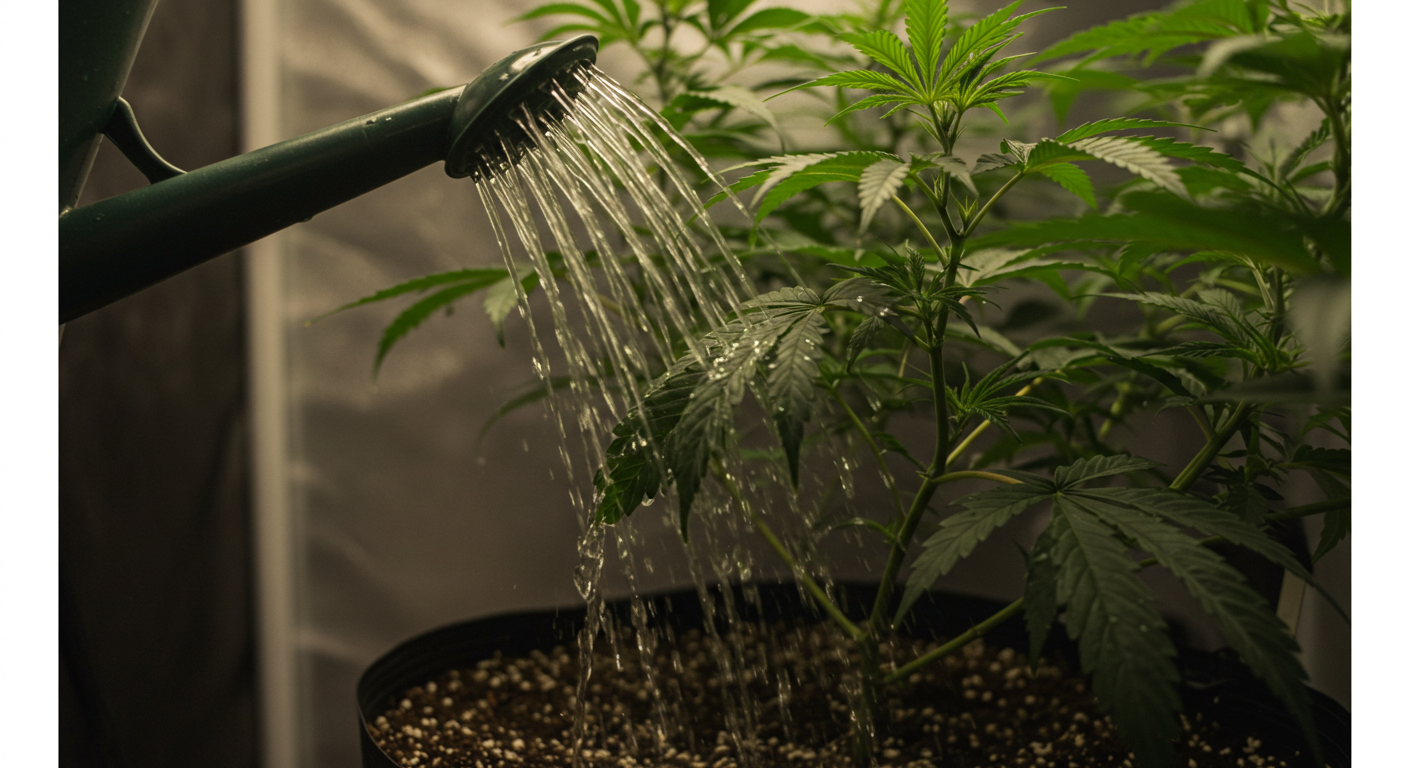
Average Yield of a Cannabis Plant
Average Yield of a Cannabis Plant
Indoor vs. Outdoor Yields: Cannabis yields vary enormously with growing conditions. Under controlled indoor conditions (as in the photo below), a typical photoperiod plant will usually produce on the order of a few hundred grams of dried flower. One review reports indoor yields roughly 50–450 g per plant under good conditions. By contrast, outdoor-grown plants are generally much larger: a well-tended outdoor specimen often averages 300–1000 g (0.66–2.2 lb) per plant, with optimal plants easily exceeding 1 kg (2.2 lb). These ranges are consistent with many grower reports. In practice, indoor harvests “pale in comparison” to outdoor yields if plants are not space-limited. (One study found actual commercial yields ranged from <20 g/ft² to >60 g/ft², averaging ~39.5 g/ft², which corresponds roughly to 400–750 g/m² per cycle.)
Cannabis plants growing under HPS lights in an indoor grow room. Indoor yields per plant typically fall in the low hundreds of grams – for example, around 0.5–1.0 g per watt of light. In fact, experienced commercial growers often target up to 1 g of dried bud per watt of HID/LED lighting, though beginners often see only ~0.5 g/watt. In concrete terms, a 400 W HPS setup might yield ~200–400 g from one plant. By comparison, outdoor plants powered by full sun commonly produce far higher yields – multiple hundreds of grams per plant and even kilograms per plant for tall sativa genetics.
A mature outdoor cannabis plant in full bloom. Outdoors, plants have unlimited root space and sunlight, so exceptionally large specimens are possible. For instance, some sativa-dominant varieties can reach over 3 m tall and yield well over 1 kg per plant in ideal conditions. In contrast, typical indica varieties are bushier and usually yield closer to ~500 g per plant outdoors. On average, outdoor plants in a good climate and season often give hundreds of grams up to a kilogram each, whereas indoor plants (even big ones) more commonly yield in the few-hundred-gram range.
Photoperiod vs. Autoflower Yields
Cannabis genetics and flowering type also strongly influence yield. Photoperiod plants (which flower when day length is reduced) can be vegged indefinitely and generally produce larger plants and buds. One grower’s guide notes photoperiod plants average 400–700 g per plant (across indoor/outdoor). By comparison, autoflowering varieties (which switch to bloom on a fixed clock) typically remain smaller and faster-growing, yielding roughly 100–300 g per plant under comparable conditions. ILGM estimates indoor autoflowers often yield only about 50–120 g per plant (and outdoor autos perhaps 100–200 g). This reflects the fact that autoflowers have limited veg time.
However, photoperiod plants require more care (light-cycle management, training, etc.), so many growers choose autos for ease even at the cost of yield. In any case, adjusting light schedules can dramatically boost yields: one study found that lengthening the flowering photoperiod from 12 h to 14 h light (at least early in bloom) more than doubled cannabinoid yield in some varieties. This suggests that giving a plant more light hours during bloom often increases its final bud weight.
Factors Affecting Yield
Many variables impact yield. Key factors include:
Genetics/Strain: The single greatest factor. High-yielding varieties (often sativa-dominant or hybrid “monster” strains) can be capable of producing 1+ kg per plant outdoors. By contrast, many indica-dominant or fiber/hemp strains yield far less (hundreds of grams). Even within a strain, breeder claims vary; checking the expected max yield for your genetics is wise.
Lighting (Intensity & Spectrum): Light is fuel for bud growth. More powerful lights (or natural sun) generally mean more yield. A rule-of-thumb is ~1 g dry bud per watt in a well-optimized setup. Lights like HPS or high-output LEDs are commonly used. For outdoor growers, the sun provides roughly equivalent to thousands of watts.
Light Duration (Photoperiod): As noted, the length of daily light in flower can alter yield. Some research shows that extending bloom lighting (longer daylight) can substantially raise final yields. Indoors, growers often use 18/6 or 20/4 light cycles in veg and 12/12 in flowering, but novel schedules (e.g. 14/10) are studied for higher output.
Nutrients and Medium: Plants need balanced N-P-K and micronutrients. Both underfeeding and overfeeding can hurt yields. Hydroponic systems sometimes speed growth, but in practice soil-grown plants with compost/organics can match those yields with less risk. The medium size (pot size) also limits root growth, so larger containers generally allow bigger plants (up to ~15–20 L pots indoors, and large in-ground outdoors).
Grow Techniques: Training methods (topping, LST/Scrog, supercropping, Sea of Green, etc.) can dramatically improve yield by exposing more bud sites to light. For example, a well-executed Screen-of-Green (Scrog) can turn many small plants into a uniform canopy, often raising yield per watt or per square meter.
Wet vs. Dry Weight: Importantly, “yield” usually refers to dried flower, not fresh weight. Cannabis buds are ~75% water at harvest, so drying/curing shrinks weight by ~70–80%. For example, 100 g wet harvested buds typically yield only 20–25 g dry after curing. Thus when we quote yields (e.g. 300 g), we mean cured dry weight.
Record-Breaking Single-Plant Harvests
At the extreme end, a few plants have produced astonishing harvests. The current world-record single-plant yield comes from an indoor autoflower: this plant produced an astounding 1,300 g (about 2.9 lb) of dried buds. That record crop was achieved by grower “Neil” of Perfect Sun LED, using an Auto Critical strain, coco/perlite medium and optimized conditions.
Even more sensational (though unconfirmed) are anecdotal outdoor claims: one grower forum reports an outdoor plant yielding 23 pounds (~10.4 kg) of bud. (In that story, the plant was massive, grown in a 300-gallon hole with organic amendments – a true outlier.) While these one-off extreme yields grab headlines, they require perfect weather, genetics, and cultivation. Most growers will never reach anywhere near that, but it illustrates the upper bound.
Notable Personal Harvests
Among home growers, large plants can routinely yield multiple hundred grams. For instance, tall sativa strains in a sunny outdoor garden often produce 1–2 kg per plant. Many expert hobbyists report single-plant yields of a pound or more from outdoor clones (especially in 100+ gallon setups). By contrast, a typical indoor home grow (one plant under a few hundred watts) might give a few hundred grams at best. Even so, a 400–600 g harvest from a well-grown indoor plant is often considered excellent, whereas 5–10 oz (140–280 g) might be average for many first-time growers.
For context, early medical cannabis regulations tended to underestimate plant potential. California’s SB-420 once suggested 6 mature plants would yield only 8 ounces (~227 g) per patient per year, implying ~38 g/plant. In reality, a single healthy plant can easily exceed that. As one guide puts it: indoors you control everything, but outdoors “massive plants” have far more space and nutrients. In sum, personal grows typically range from a few dozen grams (small autos or low-light conditions) to several kilograms per plant (large outdoor sativas), with most hobbyists aiming for a few hundred grams each.
Commercial Grow Operations
In professional cultivation, yield is often measured by area or energy. Many commercial growers target around 35–70 g of dried flower per square foot of canopy per harvest. This translates to roughly 380–750 g per square meter. A top-tier facility might average ~60 g/ft² (≈645 g/m²) if genetics and environment are highly optimized. These figures line up with industry surveys: one study found an average of 0.96–1.08 g per watt of lighting in advanced indoor grows, and about 39.5 g/ft² of canopy averaged across many harvests.
At large scale, total output is enormous. For example, the Aurora Sky greenhouse in Alberta (74,000 m² under lights) is designed to produce about 8,000 kg of cannabis per month. That facility would need thousands of large plants to hit such totals. Even the UK – with strict laws – produced ~95 metric tonnes (95,000 kg) in 2016 for medical purposes (about 45% of global legal production). Such figures show that while one plant’s yield has practical limits (typically under a few kilograms), a well-managed commercial farm can yield tons of flower per year.
In summary, there is no single “average” yield for cannabis – it depends on genetics, environment, and grower skill. Broadly speaking, indoor plants usually yield on the order of 100–500 g each, while outdoor plants often yield 500–2000 g (or more) per plant under good conditions. Photoperiod plants generally out-yield autoflowers (e.g. ~400–700 g vs. 100–300 g). Industry benchmarks (grams per watt or per square foot) align with these ranges. The extreme records remind us of the plant’s potential – a legendary autoflower hit 1.3 kg from one plant – but most growers should expect much more modest harvests.
Share this article
Written by : alexbuck
Follow us
A quick overview of the topics covered in this article.
Latest articles
December 24, 2025
December 24, 2025
December 24, 2025
December 24, 2025





